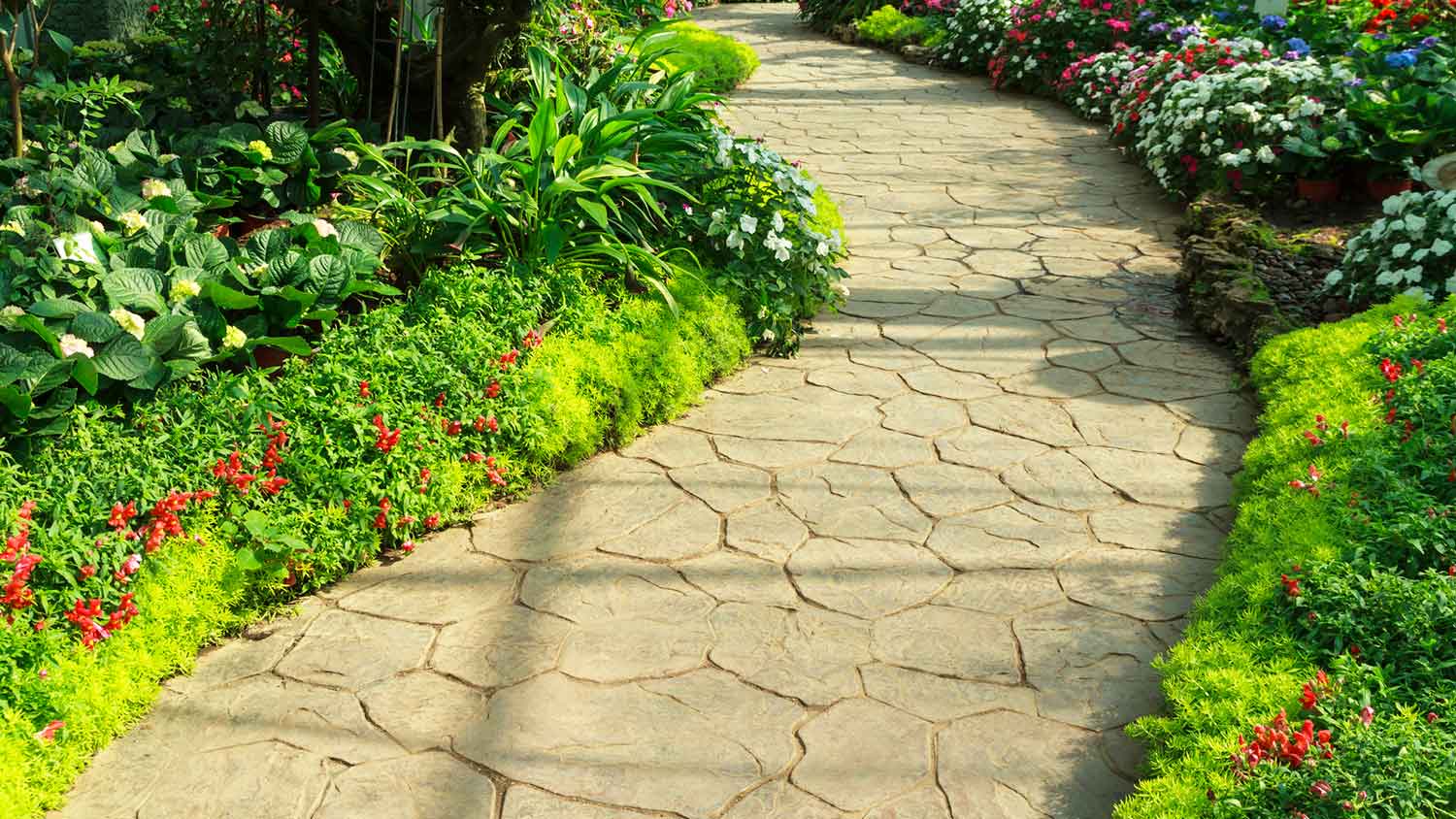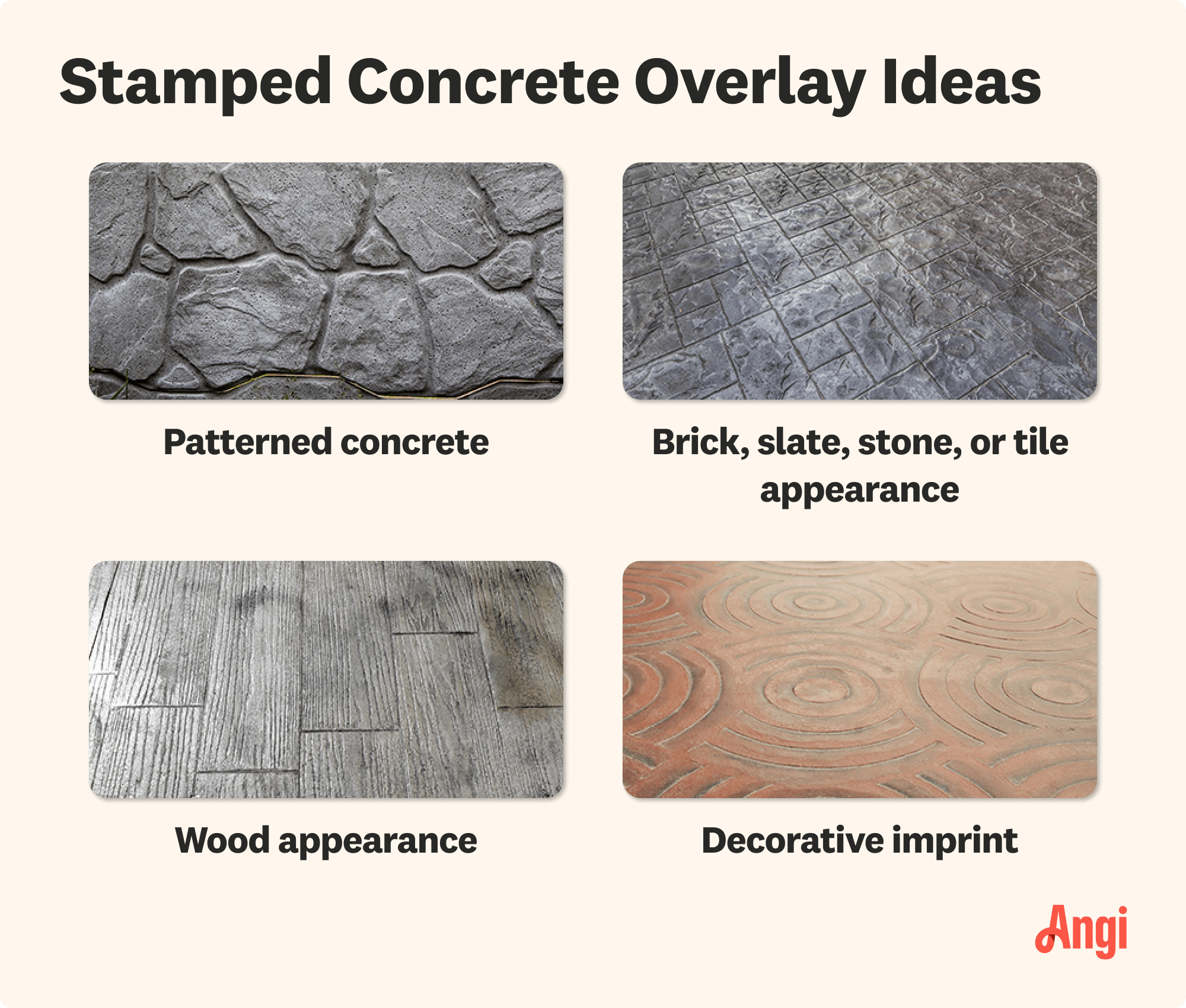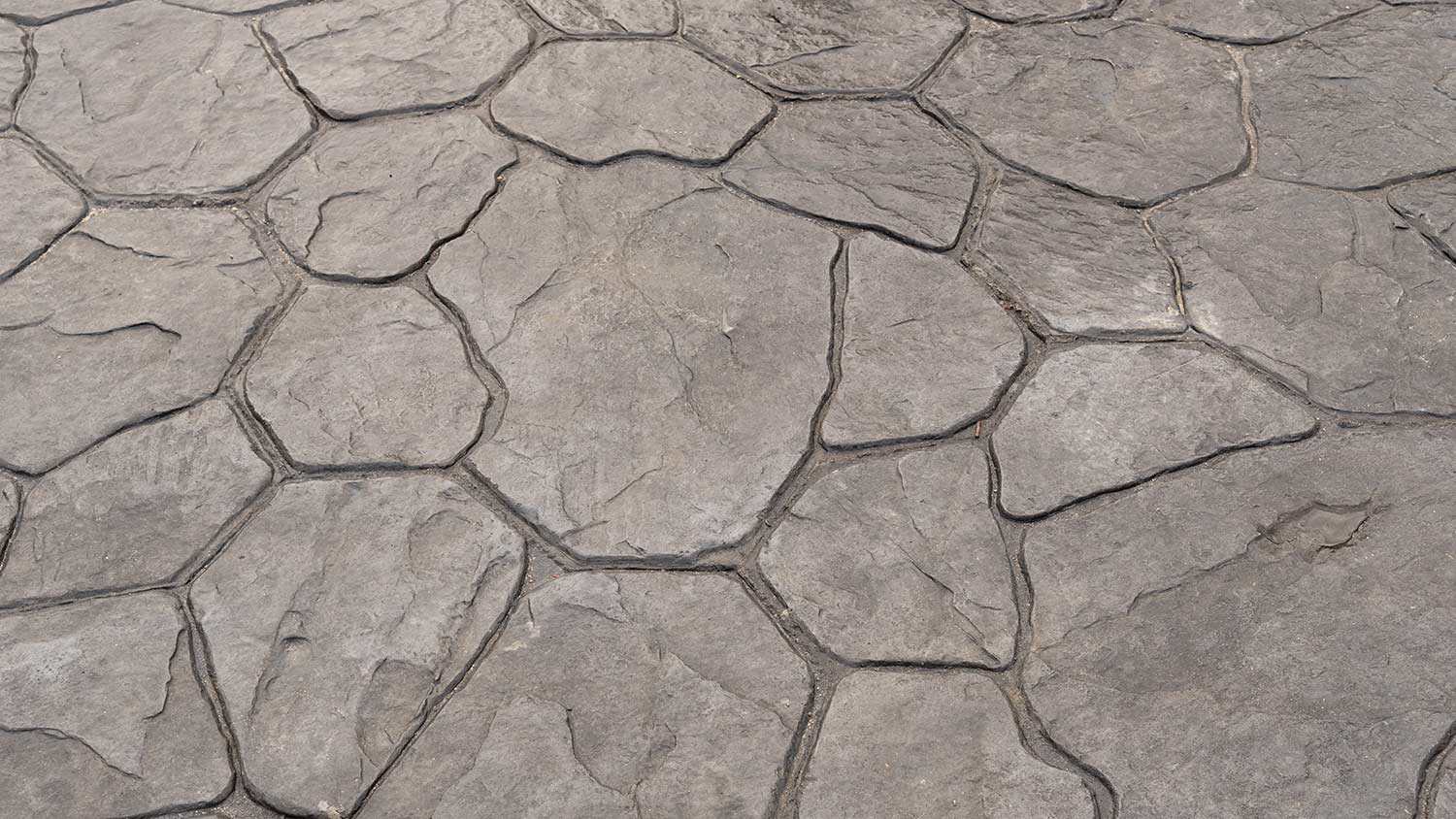
Discover stamped concrete cost. Learn about installation prices, cost factors, and how to save on your stamped concrete project.
Give your patio new life with a stamped concrete overlay


A stamped concrete overlay is an easy way to upgrade your existing concrete.
Stamped concrete overlays cost about $3–$5 per square foot.
Benefits include its appearance, ease of installation, durability, and increase in home value.
This project is best left to a stamped concrete professional.
When a concrete walkway, patio, or steps have structurally deteriorated, you’ll need to replace it. But if the concrete is still structurally sound and just needs a little TLC, a stamped concrete overlay can transform the area and bring life to your hardscape. With various patterns, colors, and textures, it's easy to find something that matches your style and complements your existing landscape. Here’s what to know about stamped concrete overlays, including their various uses, costs, pros, and cons.
A stamped concrete overlay is a layer of concrete poured over existing concrete that’s then stamped using a premade form that creates a pattern or design on the surface of the fresh concrete. The overlay is made of a specifically designed and fortified mixture that becomes an integral part of the existing concrete structure when professionally installed.
Preparation involves cleaning the existing concrete and using bonding agents to ensure proper adhesion between the existing concrete and the new concrete overlay. Once the overlay has cured, a UV protective sealer with a grip to assist in traction is applied over the entire area.
Stamped concrete refers to newly poured concrete that has been textured with stamping, while a stamped concrete overlay is poured over the top of an existing concrete slab and stamped. An overlay is more affordable than breaking up an existing concrete slab and pouring an entirely new one with texture, so many homeowners with existing concrete will opt for this option to upgrade it.

Before getting your heart set on a new stamped concrete overlay, there are a few benefits and drawbacks to consider. The main benefits of a stamped concrete patio include its appearance, ease of installation, durability, and increase in home value.
Appearance: You can choose from a wide variety of concrete patio finishes in an array of colors, stains, and textures for your stamped concrete to match your house, patio furniture, and outdoor decor.
Ease of installation: With an overlay, there is no mess from removing concrete with jackhammers or the noise associated with demolition. A typical overlay project can be performed by a stamped concrete contractor from start to finish in two days.
Durability: Stamped concrete patios and walkways last around 25 years.
Increase in home value: If you list your home to sell in the future, you can account for the cost of the stamped concrete in your sale price.
The main drawback of stamped concrete is that it can be tricky to install, requiring special tools and techniques.
Requires hiring a pro: Stamping concrete is a complex task best left to the professionals, so you will likely need to vet and hire a stamped concrete contractor.
Dries quickly: A stamped concrete overlay is thinner than a new concrete slab, so it dries much faster. This means there is little room for error and little time to make repairs once the concrete starts to set.
Maintenance: Stamped concrete needs to be sealed every couple of years, so plan for that additional cost and work over the long term.

Unlike brushed concrete, stamped concrete offers a range of colors and styles for your decorative concrete overlay. You can transform a space to be unique and eye-catching or choose a subtle look that blends in with the rest of your home. You can even opt for an overlay that looks like another material, such as brick or stone.
Here are common stamped concrete overlay ideas to inspire your project:
Patterned concrete with geometrical shapes (symmetrical or asymmetrical)
Concrete that resembles brick, slate, stone, or tile
Concrete that looks like wood flooring, reclaimed wood, or distressed wood
Decorative imprints of images such as turtles, geckos, flowers, or sunbursts
There are a few key things to know to keep your stamped concrete overlay in good condition.
Sweep the surface with a broom before washing it
Wash it with mild detergent and warm water
Reseal the overlay every two to three years
Avoid using harsh chemicals on the surface
Clean any spills right away, especially oil
The cost of concrete resurfacing for an overlay patio is between $3 and $5 per square foot, but the more intricate and detailed your stamping pattern, the more it can cost—sometimes up to $20 per square foot.
For comparison, concrete demolition and removal costs around $2 to $6 per square foot, and a new plain, poured concrete patio costs another $4 to $8 per square foot. A stamped concrete patio costs between $8 and $28 per square foot.
If you have experience pouring and stamping concrete, you may be able to tackle a stamped concrete overlay as a DIY project. Keep in mind that if you’re installing an overlay over damaged concrete, you’ll need to have the technique just right to allow the new layer to adhere properly to the old concrete. If the project covers a large area or needs a lot of prep due to damaged concrete or uneven ground, you’re better off calling a pro.
Hiring a local stamped concrete pro will ensure the site is leveled correctly, the old concrete is prepared for the overlay, and the overlay is poured, stamped, and cured properly.
From average costs to expert advice, get all the answers you need to get your job done.

Discover stamped concrete cost. Learn about installation prices, cost factors, and how to save on your stamped concrete project.

Discover stamped concrete wall cost estimates, including average prices, key cost factors, and tips to help you budget your project with confidence.

Stamped concrete is an affordable alternative to bricks, pavers, tile, or wood. Learn more about stamped concrete and if it’s right for your project.

Maintaining stamped concrete makes it look slick and fresh, boosting the look and feel of your home. Learn how to clean stamped concrete in this guide.

Get the stylish look of pavers without the cost. Here's how to stamp concrete and tips for when it's best left to the pros.

Brushing and stamping are two common concrete finishes. Learn what sets brushed and stamped concrete apart and how to choose between them.